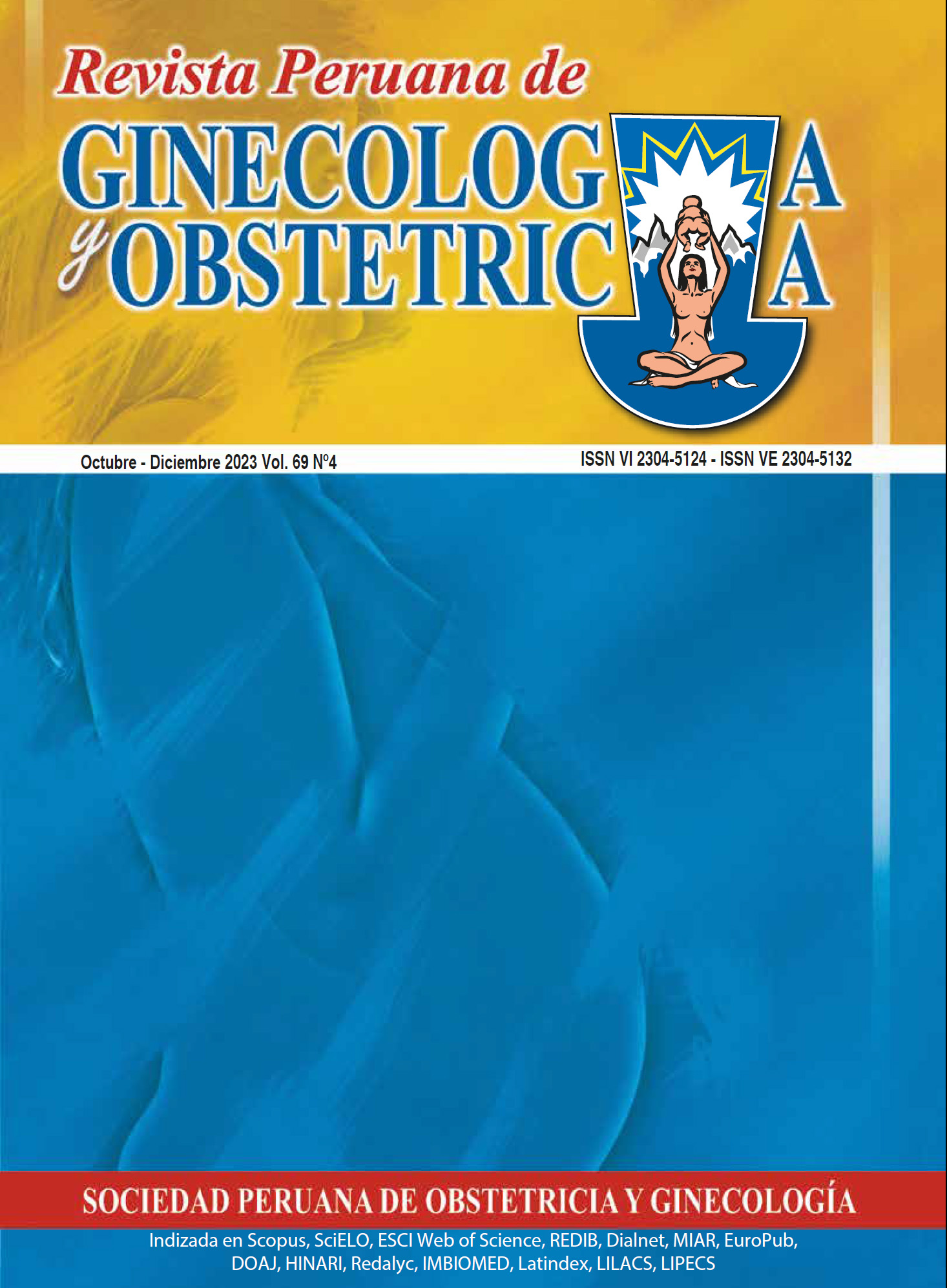Consideraciones sobre la anemia en la gestación y el recién nacido en el Perú: revisión narrativa
DOI:
https://doi.org/10.31403/rpgo.v69i2569Palabras clave:
Gestantes, Anemia, Hierro, Hemodilución, AlturaResumen
La anemia durante la gestación es considerada un problema de salud pública debido
a las prevalencias alarmantes que se presentan a nivel mundial. La medida optada por
los diversos gobiernos es la administración masiva con suplementos de hierro. Sin
embargo, actualmente existe evidencia contradictoria sobre el consumo de hierro,
el exceso de su consumo y los potenciales riesgos durante la gestación tanto para
la madre como para el producto. Para la gestación se requiere de 1 gramo adicional
de hierro para la madre, el feto, la placenta y el parto. Esto genera un aumento de la
masa roja del 20%; pero, para evitar la hemoconcentración el volumen plasmático
se expande casi el 50%, generando una hemodilución fisiológica. Para la gestante
no se ha establecido un criterio que permita diferenciar la anemia por deficiencia de
hierro, de la anemia fisiológica debido al proceso normal de hemodilución. En el caso
de Perú y de países con población residente de altura, se suma una problemática
adicional, el factor de corrección de hemoglobina por residencia en la altura, el cual
es un valor determinado de forma matemática y arbitraria. Las evidencias recientes
sugieren que este factor debe ser reevaluado, debido a que no considera la etnia y
el tiempo generacional de residencia en la altura. La presente revisión muestra una
actualización y discusión de los criterios de diagnóstico de anemia, la suplementación
con hierro, el factor de corrección de hemoglobina por altura de residencia y el
impacto de la contaminación ambiental sobre el proceso de gestación.
Descargas
Descargas
Publicado
Cómo citar
Número
Sección
Licencia
Derechos de autor 2023 Gustavo F. Gonzales, Carol Ordoñez-Aquino, Cinthya Vásquez- Velásquez

Esta obra está bajo una licencia internacional Creative Commons Atribución 4.0.
Esta revista provee acceso libre inmediato a su contenido bajo el principio de que hacer disponible gratuitamente la investigación al publico, lo cual fomenta un mayor intercambio de conocimiento global.















